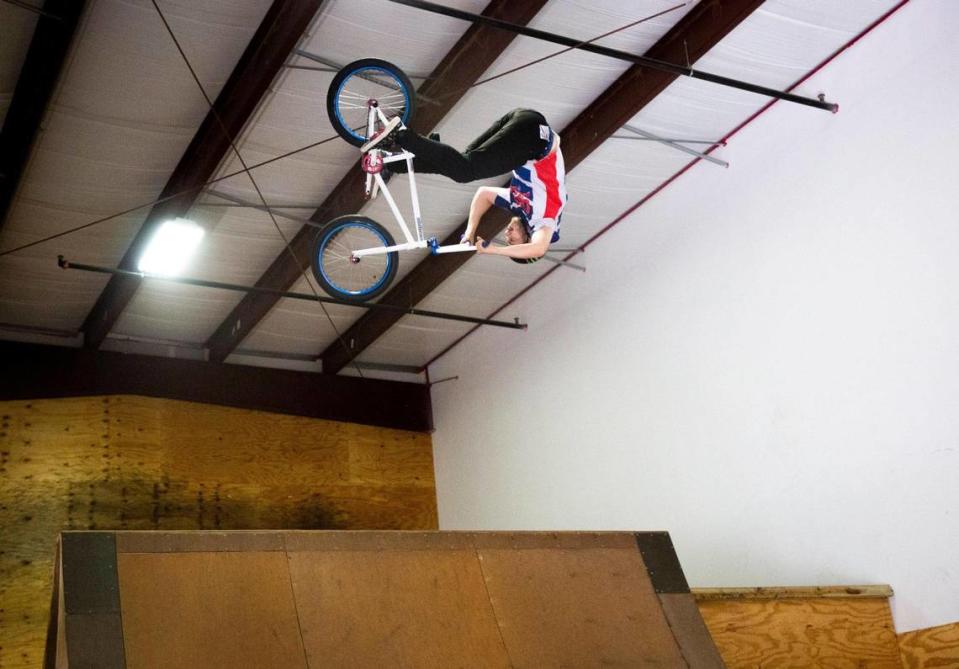From the Triangle to Tokyo, freestyle BMXers are the area’s unlikeliest Olympians
The summer campers who pay the bills have all gone home, and the day’s heat sits heavy near the metal ceiling of a nondescript warehouse in an equally nondescript suburban industrial park.
Two men and one woman sit on BMX bikes in the wash of heavy-duty fans, on a balcony overlooking a plywood cavalcade of ramps, jumps and platforms. One at a time, they drop over the edge and into the park, practicing tricks, honing routines, launching themselves into the air — spinning, flipping, whirling, even bouncing off vertical walls — at times barely still in contact with their bikes, at others so impossibly high you realize television has been lying to you all these years.
There are no coaches here, just Freestyle BMX riders pushing the limits of gravity and inertia, doing what they’ve always done when presented with any kind of upward momentum, then returning to the balcony for an after-action debrief.
“You landed more gently.”
“I think it was better. It’s still bad.”
“Lining up a triple?”
“No, but I know I can.”
Daniel Dhers, Justin Dowell and Nikita Ducarroz are among the best in the world at Freestyle BMX and they have all proven that in their insular world, with the energy-drink sponsors to back it up. Now they’ll get to prove it to the rest of the world in Tokyo as the sport makes its Olympic debut.
Dhers, who owns the Daniel Dhers Action Sports Complex in Holly Springs and is one of the sport’s elder statemen at 36, will ride for his native Venezuela. Dowell, from Virginia Beach, is 21 and one of two American men competing. Ducarroz, 24, was born in France and grew up in California with Swiss roots; she’ll ride for Switzerland.
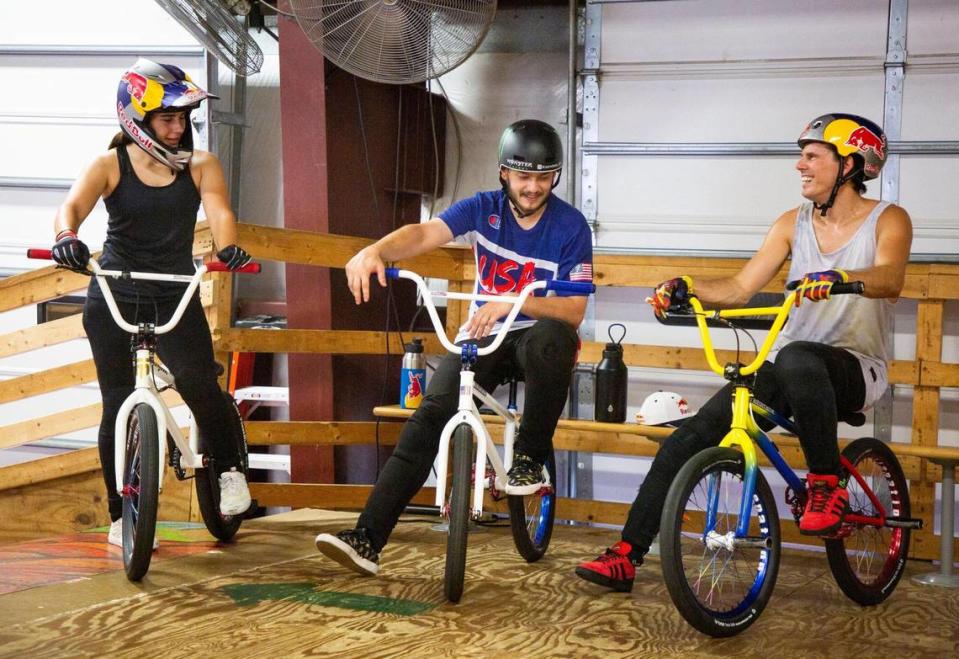
The latter two had been coming to Holly Springs to train with Dhers, along with several other Olympians. When the pandemic hit, they moved here to ride full time. Dowell bought a house in Fuquay-Varina; Ducarroz in Holly Springs.
They’re among the nine men and nine women who will compete in Freestyle BMX for the first time in the Olympics, starting Friday. Just like snowboarding in the Winter Games and skateboarding and surfing in Tokyo, what was once an outlaw sport has crossed over into the mainest of the mainstream.
And as they prepare for the Olympics, worrying about the logos on their helmets and all the other little bureaucratic hurdles they don’t normally have to clear, they’re all confronted with the same strange contradiction: they’re suddenly on the brink of realizing a dream they didn’t even know they had.
“It almost doesn’t seem real,” Dowell said.
“I see all these other people getting named to Olympic teams in more traditional sports like swimming and gymnastics, and I thought, ‘Oh, that’s so cool.’ Then I kind of realized, I get to go to this too,” Ducarroz said.
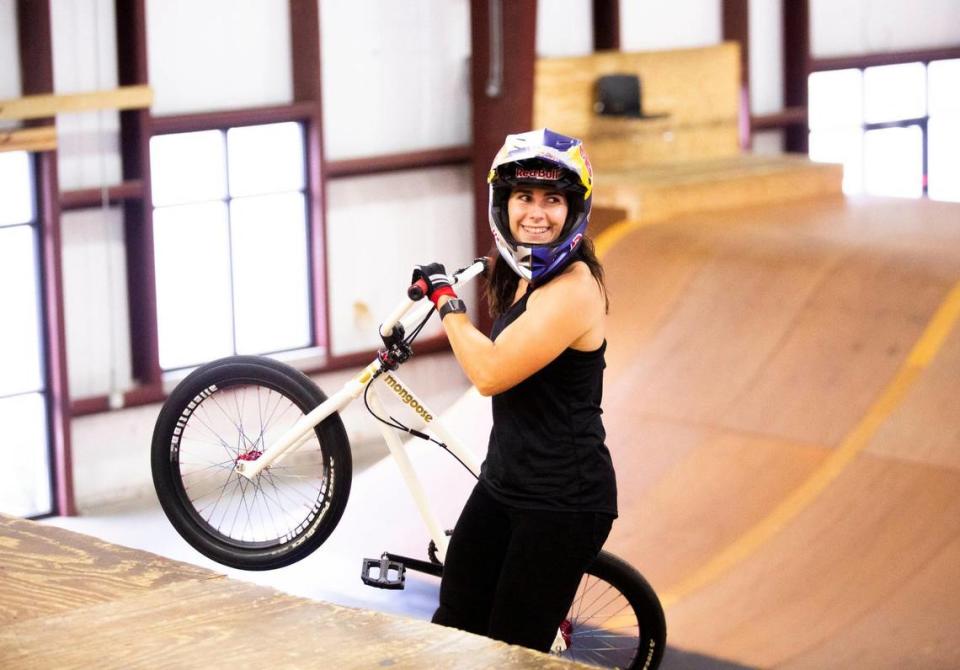
A home in Holly Springs
How Holly Springs became the epicenter of Freestyle BMX is also the story of the sport’s rise and fall and potential rise. Extreme sports started to become less extreme in the mid-90s, crossing the Rubicon when ESPN launched the X Games in 1995. Skateboarding had Tony Hawk. Freestyle BMX had Dave Mirra. They both had their own video games and crossover stardom.
Mirra settled in Greenville and the BMX world followed him there, including Dhers, recently arrived in the United States from his native Venezuela, who started out sleeping on Mirra’s couch. It became known in the sport as “Protown” and Mirra built his own private indoor training center, the Animal House. Invitations to ride there were inductions into an elite fraternity of high-flying riders.
In the mid-aughts, Mirra started to lose interest in freestyle and started riding rally instead, on dirt courses. He shut down the Animal House in 2011 and turned the keys over to Dhers at a time when Dhers was also tiring of the difficulty of traveling from Greenville to competitions all over the world. Dhers opened it to the public, but he wanted a more convenient spot.
Dhers looked all over the country, but a friend suggested the warehouse space in Holly Springs, close to an international airport. So for the past seven years, the best freestyle riders in the world have been making pilgrimages to southwest Wake County to ride with Dhers. He’s tweaked and rebuilt and reconfigured the original ramps many times since then, but more than a few still are still adorned with original Animal House graffiti.
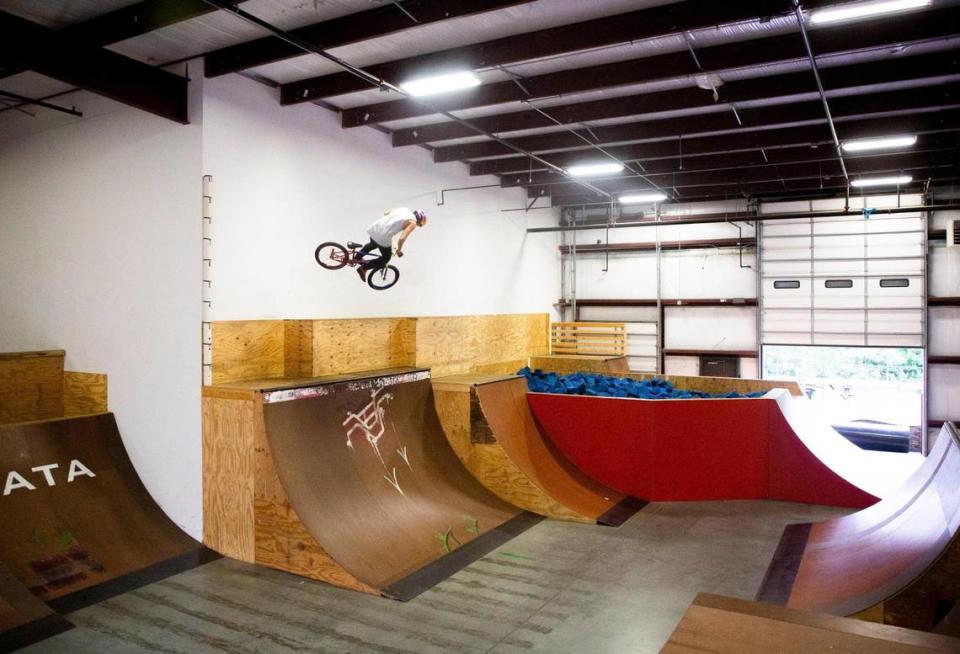
That’s an informal tribute to Mirra, who died by suicide in 2016. There are formal tributes in Dhers’ office and on the back of his helmet. His memory is never far from Dhers, not only as a friend and mentor but as a symbol of what might have been for Freestyle BMX.
Hawk is still going strong, as an icon and personality, and skateboarding has always had a sense of self-preservation, a way to stay cool no matter what happens around it. The commercialization of the sport — from the X Games to Jackass to the Olympics — has never dented its essential rebel ethos, in part because skaters have embraced their own branding from the beginning.
BMX hasn’t been able to maintain the same cultural resonance. While Mirra’s decline and tragic death deprived the sport of its own icon, external forces were also conspiring against the sport. The increasing popularity of mountain biking diverted bikers who once might have been interested in BMX; razor scooters became the gateway vehicle of choice for younger kids, not dirt bikes. (Dhers leases retail space to a scooter store; while the bikers practice indoors, kids take private scooter lessons on the outdoor course.)
Throw in the usual internal debate between legitimacy and commercialization, between sport and culture, that can generate enough centrifugal force to tear any fringe sport apart, and the Olympics has suddenly emerged as a seminal moment for Freestyle BMX: Could worldwide exposure of these improbable mid-air gymnastics on bikes thrust the sport into a new era?
Or, put another way: Can the most corporate sporting festival in the world make BMX bikes cool again?
Win or die trying
As the Olympics approach, all three riders are working to perfect parts of their routine and individual tricks. Dhers didn’t have the time or space to create an exact replica of the Olympic bike park — the Australians are training on one — but the collection of ramps and spines is close enough.
Qualifying was different: The way to get to Tokyo was to ride slow and steady, mistake-free, without any big gambles. But the Olympics will consist of two 60-second runs. The best counts. The riders will have nothing to lose. In bike terms, they have every incentive to “send it” — to leave nothing behind, to find out who the best win-or-die-trying rider is.
“It gets to a point where the trick will be too gnarly to really put in a run, because if you’re going to land low and it’s going to kill your energy and the beauty of the run, you have to scale back,” Dhers said. “The hardest part is how to strategize. It’s like a game of chess. You can have the gnarliest tricks but if you mess up, you’re done.”
The best rider might be Dhers, who despite being of the previous generation -- he won the first of his five X Games titles in 2007-- won gold at the 2019 Pan-American Games, a sort of pre-Olympic freestyle test run. Dowell, who won bronze in that competition, grew up admiring Dhers and became the first BMX rider to land a 720 spin off a spine -- a vertical ramp that has no flat landing area, requiring the rider to launch with extra height and land immediately back on the down slope. He’s working on another trick that he’s been saving for his Olympics routine.
“I swear, if he does it, they will lose their minds,” Dhers said, watching him try.
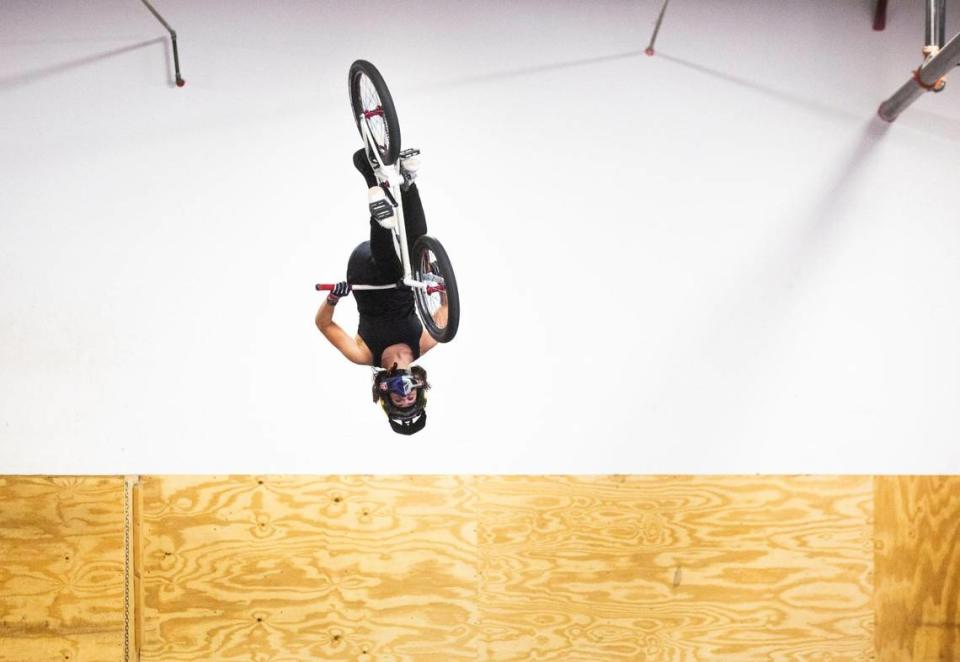
Ducarroz grew up a soccer player, only to find herself shrinking from team sports as she struggled with anxiety issues. Her parents insisted she still do some kind of a sport, so she started riding a mountain bike, then transitioned into BMX at 14. Not only is she an Olympian now, 10 years later, she started her own mental-health advocacy group focusing on action sports, called Mind Tricks.
Their routines are carefully curated collections of tricks, even if they rarely go exactly as planned. (Adapting in not only midrun but midair is an elite skill.) Ducarroz spends most of the afternoon trying to perfect a 360 spin off a spine, a difficult trick to land softly on such a vertical surface, while Dhers counsels her.
“I can’t find that in-between,” Ducarroz says after one hard landing.
“I feel your pain,” Dhers says. “You’ve just got to be quicker.”
It’s also hot in the warehouse, and the three-plus hours the riders are practicing are the hottest of this July day. At one point, Dowell leans over, takes off his helmet and tips it forward. A cascade of sweat pours out.
“There are bigger parks, but you’re not going to get the level of riding that you get here,” Dowell said. “You can have the best training facility in the world, but if you’re alone in it, you’re not going to progress. The progression here is the best in the country. And the world.”
The unlikely Olympians
There’s a rhythm to their practice. A rider drops in and disappears over the edge, only to reappear in the air off the first ramp, then back in the air off a spine, then bouncing off a vertical wall. There usually aren’t any tricks in there; that’s all to build momentum. Coming back toward the starting point, the magic happens. Off the spine, or off the next ramp that sits offset from the first, the riders will launch themselves into the air and twirl the bike underneath them, or whirl themselves into multiple spins or flips.
Television cannot capture the height, the raw energy, of these maneuvers. It’s not just that the riders seem to be suspended in the air; they never ever seem to have enough time or altitude to get their bike and their back tire in position to land. Yet they always do.
Dhers has continued to compete with the Olympics in mind. For someone who grew up in the sport as he moved from Venezuela to Argentina to Pennsylvania to North Carolina, who rode with the legends and became one himself, it presented a new challenge. It also gave him a new lease on a very long career.
“Even like as a professional, I never thought I would see it in my competitive years,” Dhers said. “Even when the talks got warm, I never thought it would happen. When they approved it in 2017, I was like, I could make it because I’m feeling good. I’m the oldest guy. The oldest guy at the Olympics for sure, second-oldest at most of the Olympics. I figured I could make it three more years.”
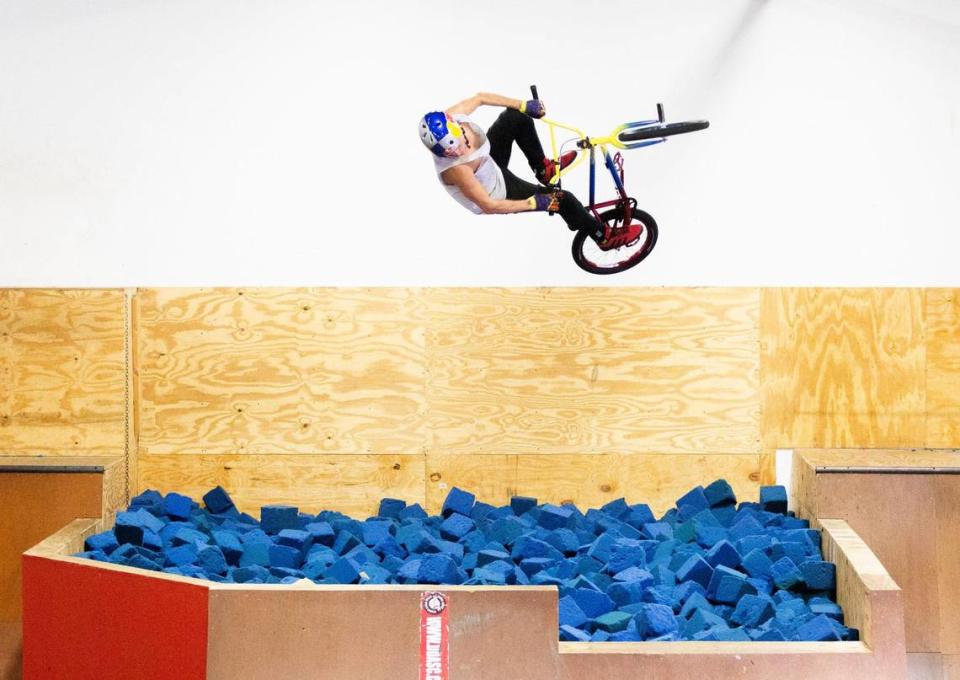
He was nearly voted Venezuela’s flag-bearer, a reminder of how different the Olympics are from anything else these riders have done.
“If I go there and win, if I go there and finish last, I’m still one of the people in this country’s history who has represented us at the Olympics,” Dowell said. “That’s something I can hold onto forever.”
Almost every other Olympic rider has spent time with Dhers in Holly Springs, including both of the American women going to the Olympics, Hannah Roberts and Perris Benegas. The combination of the park and Dhers’ reputation has made the Triangle a Freestyle BMX mecca. And perhaps also a medal mecca.
“Tokyo’s going to be interesting to watch for everyone,” Dhers said. “Whoever follows BMX, they will understand the complexity of the runs. Whoever doesn’t follow BMX is going to be impressed by the absolute best riding the world has ever seen. Because everyone wants to win this medal. And all nine people could.”
